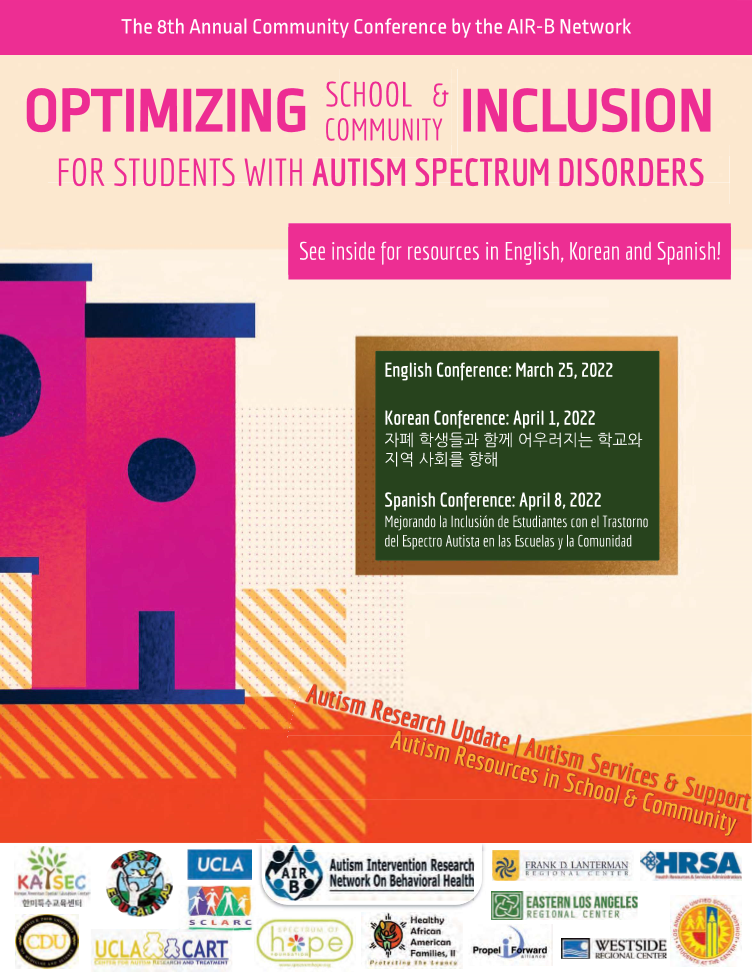Tools & Guidelines
AIR-B has researched a number of tools related to autism spectrum disorder. Our focus has been on tools that are easily used in education and community settings.
Outcome Measures
The AIR-B Network has also developed “outcome measures” for studies. Outcome Measures are a formal way to keep track of how well a tool is working. These measure the success or failure of a tool. We have worked hard to ensure these outcome measures are valid and useful in many situations, including in schools and in community settings.
Intervention Tools
The AIR-B Network is concerned with finding tools that are practical. We aim to lessen the training time for learning a tool and make it easier to double-check how well a tool is being used. The intervention tools we’ve developed aim to improve the core deficits of people with autism spectrum disorders.
Current AIR-B Network Tools for Dissemination
Social Networks
The social network is a measurement system for seeing how connected a child is to their classmates. The network is created based on interviews of the students in the classroom. The result lets us see at a glance which children are isolated and which are more popular.
This measure is useful for determining if a social intervention is needed, and seeing how an intervention changes the social connections of a group.
Social Menus
Intervention Tool
Social menus are a simple tool to help kids learn to have conversations. This is especially important for children with autism spectrum disorders. To use this tool, you can hand out menus to everyone or make the menus available at a central location for anyone to take.
Playground Observation of Peer Engagement:
Measurement
The POPE is a measurement to see how children act on the playground. The measure tracks how engaged children are in activities and with each other. The resulting information can be used to both see if an intervention is working and to spot areas where additional support is needed.
Treatment Guidelines
Intervention Tool
Parents and professionals need treatments that are based on evidence and beneficial to their child with autism. There are many treatments out there which focus on many different circumstances, and have different amounts of supporting evidence.This set of guidelines helps non-experts find the treatment that is right for them. The RAND Corporation led the effort to put together a group of guidelines. Members of AIR-B worked with a panel of experts to assess the overall strength of evidence, intervention effect, and guidance suggested by the US Agency for Healthcare Research and Quality. Interventions have been rated from ‘insufficient’ to ‘high strength’ of evidence.
These treatment guidelines are discussed further in the following article: Maglione, M., Gans, D., Das, L, Timbie, J, & Kasari, C. (2012). Nonmedical interventions for children with ASD: Recommended guidelines and further research needs. Pediatrics, 130, DOI: 10.1542/peds.2012-0900O.
Remaking Recess Manual and Pamphlet
Intervention Tool
Remaking Recess is an intervention for improving the social inclusion of elementary aged children by helping them interact with their peers. It helps children interact with their peers, turning recess into a place to learn social skills and put those skills in practice.
The manual provides a thorough explanation of Remaking Recess. The Remaking Recess manual is targeted for elementary school recess settings.
The pamphlet provides an overview of Remaking Recess. It is not as up-to-date as the manual.
Mind the Gap Guide
Intervention Tool
Mind the Gap is an AIR-B project to connect families with support services in their area. And to put families with a recent diagnosis in a better position.
These digital binders contain resources and information to help parents better understand autism and the service system.
MTG Family Resource Binder
https://www.livebinders.com/b/2665813 (English Version)
https://www.livebinders.com/b/2673539 (Spanish Version)
Download Resource Guide PDF files below:
STAT Manual
Intervention Tool
Schedules, Tools, and Activities for Transitions for the Daily Routine. The STAT Manual contains tools for teachers to make transitions easier.
It is tailored for teachers of special education classrooms.
SKILLS and ENGAGE
Intervention Tool
The original SKILLS and ENGAGE programs were used for both younger children and teens. Today many of the ideas introduced here are also represented in the Remaking Recess manual or in other interventions.
These two manuals are set up for teaching social skills to teens.
Building Better Bridges Binder
Intervention Tool
The Building Better Bridges intervention was part of AIR-B III, and focused on the transition process for children with autism. As part of this intervention we created a set of workbooks for families undergoing the transition process.
Building Better Bridges — Livebinder
Access Key: BBB
Access Key: BBB
Download BBB binder PDF files below:










